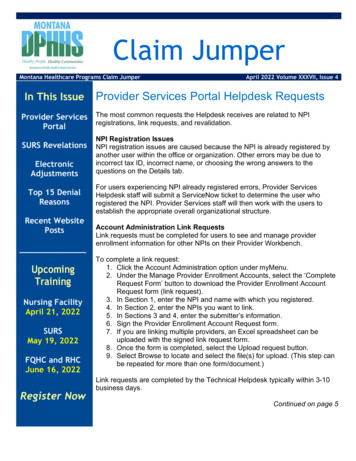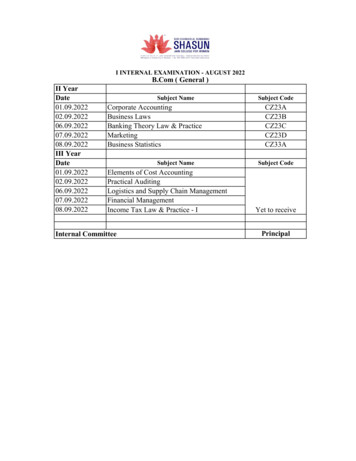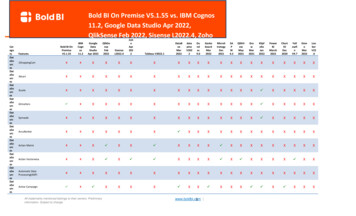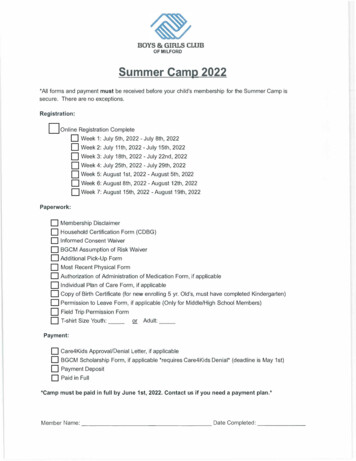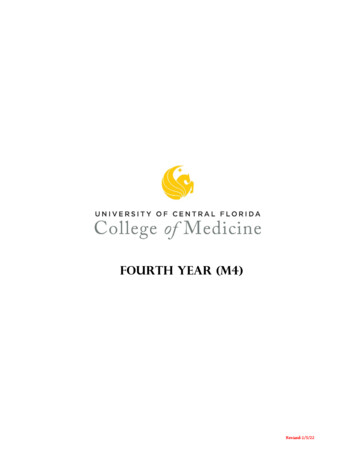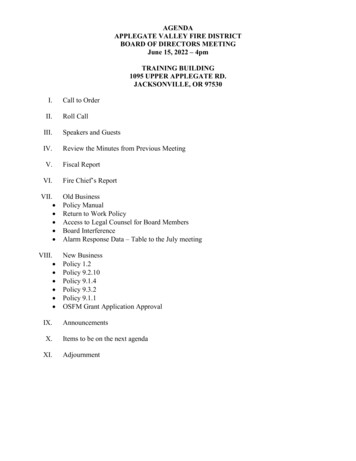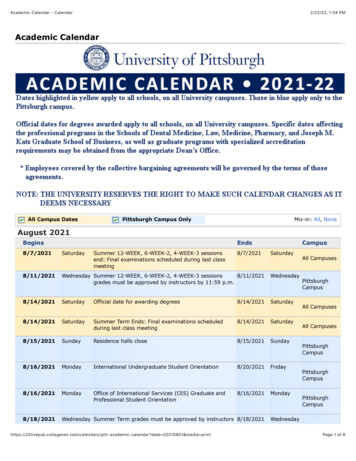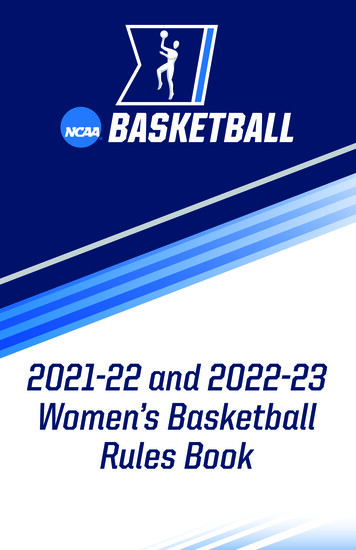
Transcription
2021-22 and 2022-23Women’s BasketballRules Book
IFiLOSEI’LL RESPOND WITH RESPECT.Don’t undo my hard workwith poor sportsmanship.
2021-22 and 2022-23 NCAAWOMEN’S BASKETBALLRULESNATIONAL COLLEGIATE ATHLETIC ASSOCIATION
[ISSN 1042-3877]THE NATIONAL COLLEGIATE ATHLETIC ASSOCIATIONP.O. BOX 6222INDIANAPOLIS, INDIANA 46206-6222317-917-6222WWW.NCAA.ORGAUGUST 2021Manuscript Prepared By: Jon Levinson, Secretary-Rules Editor, NCAA Women’s Basketball RulesCommitteeEdited By: Rachel Seewald, Director, Championships and Alliances, Playing Rules and OfficiatingNCAA, NCAA logo and NATIONAL COLLEGIATE ATHLETIC ASSOCIATION are registered marksof the Association and use in any manner is prohibited unless prior approval is obtained from theAssociation.COPYRIGHT, 1974, BY THE NATIONAL COLLEGIATE ATHLETIC ASSOCIATIONREPPRINTED: 1975, 1976, 1977, 1978, 1979, 1980, 1981, 1982, 1983, 1984, 1985, 1986, 1987,1988, 1989, 1990, 1991, 1992, 1993, 1994, 1995, 1996, 1997, 1998, 1999, 2000, 2001, 2002, 2003,2004, 2005, 2006, 2007, 2008, 2009, 2010, 2011, 2013, 2015, 2017, 2018, 2019, 2021PRINTED IN THE UNITED STATES OF AMERICA
ContentsNCAA Women’s Basketball Rules Committee 42021-22 and 2022-23 Women’s Basketball Rules Changes 5Points of Emphasis 6Significant Editorial Changes 10PrefaceSporting Behavior 11Important Information for Manufacturers / New Equipmentand Apparel 12Court and Equipment 13Court Diagram 15Official NCAA Women’s Basketball RulesRule 1 — Court and Equipment 17Rule 2 — Officials and Their Duties 32Rule 3 — Players and Substitutes 42Rule 4 — Definitions 46Rule 5 — Scoring and Timing Regulations 53Rule 6 — Live Ball and Dead Ball 64Rule 7 — Out of Bounds and the Throw-in 67Rule 8 — Free Throw 73Rule 9 — Violations and Penalties 77Rule 10 — Fouls and Penalties 86Rule 11 — Replay 102AppendixesAppendix I — Fight-Reporting Procedures 107Appendix II — NCAA Tobacco Policy 108Appendix III — Officiating Guidelines 109Appendix IV — Foul/Penalty Chart 114Appendix V — Concussions 117Appendix VI — Accommodations for Student-Athletes withDisabilities 119Appendix VII — Basketball Fundamentals 120Appendix VIII — Official Women’s Basketball Signals 122Index to Women's Basketball Rules 1313
NCAA Women’s BasketballRules CommitteeThe chart below lists the members of the committee who voted on andapproved the rules included in this edition of the book. This information isbeing included for historical purposes.NameInstitution or ConferenceTerm ExpirationLeanna BordnerIllinois State University8-31-22Lynn Bria, chairStetson University8-31-22Jason BurtonTexas A&M University,Commerce8-31-23Velaida HarrisWeber State University8-31-24Alex LangBrooklyn College8-31-24Jon Levinson*Secretary-Rules Editor8-31-26Keith MondilloGwynedd Mercy University8-31-22Alan NakamuraBiola University8-31-23Tara OwensCentral State University8-31-24Kelcey RoegiersGeorgia State University8-31-23Stephanie StevensGallaudet University8-31-21Be StoneyKansas State University8-31-21Amy VachonUniversity of Maine8-31-23* Non-voting memberFor a complete and current listing of the NCAA Women’s Basketball RulesCommittee, please go to: www.ncaa.org/playingrules.Those seeking interpretations of rules or play situations may contact:Jon LevinsonNCAA Women’s Basketball Secretary-Rules Editorjonlevinson@icloud.com201-693-77054
2021-22 and 2022-23Women’s Basketball RulesChangesEach changed or altered segment is identified in the rules text by a blue-shadedbackground.Three-Point Field Goal Line. (Rule 1-7.1). Moves the three-point line to themen’s distance of 22 feet, 1¾ inches on the perimeter and 21 feet, 77/8 inches inthe corners.Uniforms - Game Jersey and Shorts. (Rule 1-22.7.c). Permits an additionalcommemorative or memorial patch as authorized by an institution or a conference.Logos, Labels, Trademarks, Patches. (Rule 1-25.2). Permits an institutionalor conference logo, a commemorative or memorial patch, or a national flag to fitinside a four-sided geometric shape not to exceed 4 square inches.The Officials. (Rule 2-1.2). Changes the officials’ uniform shirt to a grey-andwhite striped shirt with black side panels, black raglan-style sleeves and shoulderswith a blue accent.Duties of Shot-Clock Operator. (Rules 2-11.6.a.6, .b.3, .b.10, andd.4). Changes the administration of inadvertent-whistle situations when thereis no team control based on why the ball is loose and the team favored by thealternating-possession arrow.Substitutions. (Rules 3-6.2.d and 3-6.3.c). Permits substitutes to enter thegame prior to the ball becoming live when a player is required to be replaced.Timeouts Granted and Charged. (Rules 5-14.10.c and .d). A replay reviewprior to the electronic-media timeout mark in each quarter or the first replayreview in the second half will trigger the electronic-media timeout.Technical Fouls. (Rule 10-12.2.a). Changes the penalty for not having aproper division line or center circle, a proper game-clock display, proper red lights/LED lights, or proper shot clock to one free throw.Technical Fouls. (Rule 10-12.2.c.3). Limits officials’ enforcement of illegaluniforms to an illegal number or the failure of a team to wear contrasting uniformcolors. Other illegalities are to be enforced by the institution’s conference office.Technical Fouls. (Rule 10-12.4.b Exception 2). Permits the electronictransmission of live statistical data to the bench area for coaching purposes.Replay - Replay Equipment. (Rule 11-1.4). Permits officials to use a digitalstopwatch embedded in the replay equipment provided the video is unaltered andis played at normal speed.Replay - Permissible Use of Replay. (Rule 11-3.1.h). Moves the time of thereplay review for a potential shot-clock violation during a successful try to the next5
6 WOMEN'S BASKETBALL RULES CHANGES AND POINTS OF EMPHASISelectronic-media timeout or intermission. Any review after the fourth-quartermedia timeout must occur before the ball becomes live following the goal.Replay - Permissible Use of Replay. (Rule 11-3.2.b). Permits a replay reviewto determine whether a goal shall count when a foul is committed by or againsta teammate of a shooter.Replay - Permissible Use of Replay. (Rule 11-3.2.c). Permits a replay reviewto determine which team caused the ball to be out of bounds, regardless of thenumber of players involved in the play, provided a ruling of an out-of-boundsviolation was made by the officials.Replay - Coaches' Appeal - Use of Replay. (Rules 11-4.1.m and .n and5-14.1.e.2 and .3). Permits a coach to appeal the ruling of the officials followinga restricted area/lower defensive box play or the counting of a goal when a foul iscommitted by or against a teammate of a shooter.Points of EmphasisIn each edition of the NCAA Women's Basketball Rules Book, several areasare given special attention. These are identified as points of emphasis. Whilethey may not represent any rules changes, their importance must not beoverlooked. In some cases, the points of emphasis are more critical thansome of the rules changes. For example, when a topic is included in thepoints of emphasis, there has been evidence during the previous year(s) thatthere has been inconsistency in administering these areas.The Rules Committee has identified the following as significant concernsthat need to be addressed because of their increased occurrence. They arenot listed in order of importance; they are all important.Enforcing the Rules as WrittenEnforcing the rules as written is a point of emphasis again after a two-yearhiatus. The rules committee wants to ensure that officials, coaches, players,administrators, coordinators, and conferences focus on the playing rules asfound in the rules book and to support officials in their enforcement of allplaying rules. When the playing rules are enforced as written, it lends itselfto consistency from game to game, division to division, and region to region.The playing rules are designed to create a balance of play, equally favorableconditions for both the offense and the defense, and provide reasonable safetyprotection for players; without the consistency in the application of the rules,the balance the rules committee seeks to provide through the playing rules isnot accomplished.Officials are tasked with ensuring that the competing teams play within therules. There is no room for personal philosophies or using “game management”to ignore enforcing a playing rule. Coaches should continue to familiarizethemselves with the rules and teach the rules to their players; when players knowwhat is legal or illegal, it reduces the number of stoppages for illegal acts andmakes for a more enjoyable game. Except when a waiver is issued by the rulescommittee, no one has the authority to set aside a playing rule or interpretation.
WOMEN'S BASKETBALL POINTS OF EMPHASIS 7Faking FoulsThe rules committee is concerned with an increase in the number of situationswhen players “flop” or fake being fouled to try to fool the official into believinga foul has been committed. Acts such as, but not limited to, embellishing theimpact of incidental contact on block/charge plays, shooters “flopping” orflailing their arms to draw a foul, and dribblers using a “head bob” attemptingto get a foul ruled on their defender do not belong in our game. As noted inthe preface of the rules book, “Good sporting behavior should be a key part of[maximizing the safety and enjoyment of the student-athlete] and should be acore value in behavior of players and bench personnel ” Whether players areacting of their own volition or coaches are teaching these tactics, by making thisa point of emphasis the committee is giving notice that if these situations do notdecrease or are eliminated there will be further action taken by the committee.TravelingTraveling is a point of emphasis for the first time since 2011. While continualprogress has been made in nearly all aspects of the game that involve traveling,particular emphasis is still needed in these areas: the pre-dribble travel (liftingand replanting the pivot foot, split-feet, and running start), the spin move tothe basket, the “Euro” step, and perimeter shooters taking an extra “hop” justafter they receive the ball or just before releasing the try. When players arepermitted to execute these moves illegally, they provide a distinct advantage toa ball handler or a shooter as well as a disadvantage to a defender; exponentiallyso when the no-calls are followed by a score, a defensive foul, or both.It is important to recognize what a player may legally do once they end theirdribble. When one foot is in contact with the playing court when the dribbleends, the only legal way for that foot to return to the playing court with theplayer still controlling the ball is by executing a jump stop; that is, the playerjumps off that one foot and lands on both feet simultaneously. Failure to landon both feet simultaneously or landing simultaneously and then pivoting oneither foot or stepping with either foot is a traveling violation.When the dribble is ended on one foot (this is the pivot foot) and the playerholding the ball steps with the free foot, lifts the pivot foot and then returns thepivot foot to the playing court while still in control of the ball, this is a travelingviolation. The only legal way a player may hold the ball while taking two stepsis to end the dribble with neither foot in contact with the playing court andthen land on one foot followed by the other foot; the first foot to land on theplaying court is the pivot foot. Understanding which foot is the pivot foot andwhat steps the ball handler may legally take is critical to correctly adjudicatingthe travel rule. An “athletic move” when spinning or pivoting must be legallyexecuted.It is essential that coaches teach their players the necessary skills to executethese moves legally and for officials to rule a violation when players violate thetraveling rule. Officials must identify the pivot foot and recognize when thepivot foot has been illegally returned to the playing court or an illegal pivot hasoccurred. On plays where the location of the pivot foot at the time the endingof the dribble is uncertain, the benefit of the doubt should rest with the dribblerhaving made a legal play.
8 WOMEN'S BASKETBALL POINTS OF EMPHASISLegal Guarding PositionKnowing and understanding the rules pertaining to legal guarding position arecritical. Understanding what is permissible by rule creates a knowledge basefor what is illegal, affecting how guarding is taught, learned, and adjudicated.Common misconceptions about guarding include the myth that a defender’sfeet must be still or planted on the floor for them to take a charge, that adefender must continue to face a player who is dribbling toward them, andthat the defender is not permitted to “move” into the path of the dribbler.These and other misconceptions regarding guarding can be eliminated whenthe guarding rule is understood. In addition, understanding legal guardingprovides boundaries for determining displacement and other illegal contact.The two components of legal guarding are obtaining and then maintaining alegal guarding position.Officials must recognize when a defender obtains and maintains legal guardingposition to correctly rule on block/charge plays and should not be defaultingto a blocking foul when it is not known whether the defender was in a legalposition. Remember, when obtaining a legal guarding position on an opponentwith the ball, time and distance are not required; the defender may obtain theirposition just in front of the opponent. Players with the ball should expect to bedefended and are not given any additional rights.Post PlayPost play is a point of emphasis again this year. A post player is a player withor without the ball with their back to the basket inside the three-second lanearea or within 3 feet of all lines that border the lane. Once a player has legallyobtained their position as a defender on an offensive post player, they canneither displace their opponent nor be displaced from that position.Officials need to be more aware of offensive post players in the lane for morethan three seconds. Three seconds in the lane is a violation that must be ruledon the offensive post players. If this violation is not ruled, the offensive teamgains an unfair advantage and increases physicality. In addition, requiring anoffensive player to clear the lane with both feet allows officials to consistentlydetermine whether the offensive player has left the lane.Contact On and By the Ball Handler/DribblerIllegal contact on the ball handler/dribbler is inhibiting the ability of teams tostart their offense. Six years ago, the rules committee and the coaches askedthat officials enforce the guideline that one “measure-up” touch is permittedon the ball handler and any subsequent contact by the defender using eitherthe front or back of the same hand or using the other hand on the ball handler/dribbler be ruled a foul. An armbar placed on the ball handler, along withtwo hands simultaneously, are automatic fouls. When there is body contactbetween the ball handler and defender, the official must determine whetherthe contact is incidental (due to both players moving legally) or illegal. Whenthe defender's body contact, such as the defender's body bumping or leaningtheir torso on the dribbler, affects the rhythm, speed, balance, or quickness ofthe ball handler, or reroutes the ball handler from their desired path, a foul has
WOMEN'S BASKETBALL POINTS OF EMPHASIS 9been committed by the defender. When the ball handler makes illegal contactwith the defender, a foul has been committed by the ball handler.It is critical that officials consistently enforce these guidelines from the startof the game until its conclusion, regardless of time and score, and from thebeginning of scrimmage/exhibition games until the last game of the season.Sporting Behavior/ConductThe rules committee is concerned about violations of the bench decorum ruleby players, coaches, and bench personnel. Only through the enforcement ofexisting rules will players, coaches, and bench personnel exhibit appropriate andacceptable behaviors. Coaches are expected to remain in the coaching box. Theextension of the coaching box four years ago was intended to allow coaches tocommunicate with their players at the opposite end of the floor without havingto come out onto the playing court. Coaches who go beyond the 38-foot line,or more importantly, onto the playing court, gain a distinct advantage, whichis not within the spirit and intent of the rules. Coaches are reminded thatwhile the bench area expands during a timeout, the bench area does not extendbeyond the 28-foot line, and coaches and other bench personnel may not moveto the expanded bench area until the timeout begins to ensure bench personneldoes not create inadvertent contact with opposing players still out on theplaying court. Coaches who leave the expanded bench area to inappropriatelyengage officials are subject to a warning or a bench technical foul. As stated inthe Officiating Guidelines (Appendix III), roaming coaches negatively influenceplay when they are out on the playing court.Misconduct by players, coaches, and bench personnel is not permitted. There iscontinued support for officials to enforce rules against misconduct by players,coaches, and bench personnel. Players' taunting, baiting, finger-pointing,trash-talking, and inappropriate gestures have increased during the pastseveral seasons. Players and coaches are permitted to celebrate an individualor team accomplishment, but they cannot direct that celebration towardstheir opponent. Also, players and coaches are not allowed to disrespectfully orinappropriately address and/or gesture at an official after a ruling is made onthe court. Player and coach behavior, which in the judgment of the official isdetermined to be a taunt of an opponent or a disrespectful act toward an official,shall be penalized by assessing a technical foul.
Significant Editorial ChangesNote: These are additions/clarifications that have been part of interpretations orcustom but have not appeared in the rules book. Rule and Section references arefor this edition unless otherwise indicated. There have been many minor editorialchanges to clean up language and eliminate wordiness.10-5.2. Editorial10-10.3. Clarification10-10.13. Editorial10-10.15. Editorial10-12.3.a.8. Editorial10-12.3.a.11. Clarification10-12.4.a.10. Editorial10-12.4.a.12. Clarification10-12.4.b. Clarification10-12.4.d.4. Editorial11-1.2. Old 11-1.111-1.3. Old 11-1.211-2.1.a. Old 11-3.111-2.1.a Admin. Old 11-1.211-2.1.b. Old 11-3.1.b11-3.1.a.-.d.Old 11-2.1.a.1-.411-3.1.e-.h. Old 11-2.1.b.1-.411-3.1.h Admin. Old 11-1.311-3.1.i, .j. Old 11-2.1.c.1.a, .b11-3.1.k.Old 11-2.1.c.211-3.1.l, .m. Old 11-2.1.d.1, .211-3.1.m Admin. Old 11-2.1.d.311-3.1.n-.q. Old 11-2.1.d.5-.811-3.2.a. Old 11-2.1.d.911-3.2.c.Old 11-2.1.e.111-4.1.a though .1. Editorial11-5.1.a-.c.Old 11-1.4.a-.cApp. III Section 1.a.1. EditorialApp. III Section 3.1.b. EditorialApp. III Section 3.1.c.10. EditorialApp. IV. EditorialApp. VII, Fund. 9. EditorialRule.Change1-3.6. Clarification1-7.2. Editorial1-8.2. Moved from 4-29.31-12.l. Clarification1-13.5.j. Editorial1-22.5. Clarification1-22.7.b. Clarification1-24.1.d. Clarification1-25.1. Editorial1-25.2 Note. Clarification2-7.6. Editorial2-7.16. Editorial2-10.13. Editorial2-12.5. Editorial3-6.2.d.Deleted4-24.2. Editorial4-29.3.Moved to 1-8.25-3.2.a. Clarification5-11.9. Editorial5-12.1. Editorial5-11.5. Editorial5-16.1.c. Editorial8-5.1.f. Clarification9-1.1.f. Clarification10-3.1.a. Editorial10-4.1. Editorial10-4.4. Editorial10-4.4.a and .d. Editorial10-4.5. Editorial10-4.5.a and .d. Editorial10-4.6. Editorial10-4.6.e. Editorial10-4.7. Editorial10
PrefaceSporting BehaviorThe primary goal of the rules is to maximize the safety and enjoyment of thestudent-athlete. Good sporting behavior is a key part of that goal and shouldbe a core value in behavior of players and bench personnel, in crowd controlby game management and in the officials’ proper enforcement of the rulesgoverning related actions.The NCAA Women’s Basketball Rules have been designated as eitheradministrative rules or conduct rules. Typically, administrative rules are thosedealing with preparation for the contest. The conduct rules are those that dealdirectly with the playing of the contest. Some administrative rules (as indicated)may be altered by mutual consent of the competing institutions. Others (asindicated) are unalterable. No conduct rule may be changed by mutual consent.All NCAA member institutions are required to conduct their intercollegiatecontests according to these rules.In the Women’s Basketball Rules, the administrative rules that may be alteredby mutual consent of the competing institutions are Rule 1, Sections 2, 3,20 and 22.4. The administrative rules that may not be altered are Rule 1,Sections 4 through 7, 15, 16 and 18; Rule 2, Section 1; and the free-throwlane diagram. All of the other rules are conduct rules and may not be altered.The rules are divided into articles for ease of reference. Equipment andapparel rules that are of concern primarily to manufacturers are contained inthe following section. All court measurements are included on the expandedcourt diagram.Those desiring interpretations of rules or play situations are asked to sendquestions, preferably via email, to:Jon Levinson, Women’s Basketball Secretary-Rules Editor224 Beechwood Ave.Bogota, New Jersey 07603-1632jonlevinson@icloud.comNote: Officials, coaches, and administrators may find updates and interpretations at:ncaawbb.arbitersports.com11
Important Informationfor Manufacturers of NewEquipment and ApparelThe NCAA Women’s Basketball Rules Committee is responsible for formulatingthe official playing rules for the sport. The committee is not responsible fortesting or approving playing equipment for use in intercollegiate women’sbasketball.Equipment manufacturers have undertaken the responsibility for thedevelopment of playing equipment that meets the s pecifications establishedfrom time to time by the committee. The NCAA urges manufacturers towork with the various independent testing agencies to maximize the safetyof products. Neither the NCAA nor the NCAA Women’s Basketball RulesCommittee certifies the safety of any basketball equipment. Only equipmentthat meets the dimensions specified in the NCAA Women’s Basketball Rulesshall be used in intercollegiate competition. Similarly, only uniforms that meetthe rules specifications shall be used.While the committee does not regulate the development of new equipmentand does not set technical or scientific standards for testing equipment or theapproval or disapproval of specific playing equipment, the committee may,from time to time, provide manufacturers with informal guidelines as to theequipment-performance levels it considers consistent with the integrity of thegame. The committee reserves the right to intercede in order to protect andmaintain that integrity.In general, the rules addressing uniforms are intended to positively impactthe following needs:COACHING - Identification of an opponent’s personnel when scouting onvideo and for in-game coaching strategy.OFFICIATING - Proper foul reporting, identification of disqualified players,or players involved in an altercation.IMAGE - How players appear on television/fan appeal.The NCAA Women’s Basketball Rules Committee suggests that manufacturersplanning innovative changes in basketball equipment submit the equipment tothe NCAA Women’s Basketball Rules Committee for review before production.12
IMPORTANT INFORMATION FOR MANUFACTURERS 13Court and Equipment1. Playing Area. When possible, building plans should provide for a playingcourt with ideal measurements as stated in Rule 1-2 and listed on the courtdiagram, ample out-of-bounds area and needed seating space for scorers,timers, and fans. A long playing court permits use of two crosswise courtsfor practice and informal games.It is recommended that padding that meets current ASTM standards beused on walls and other facility features in or around the playing area that astudent-athlete might contact during play. Padding should be installed notmore than 4 inches from the floor up to 6 feet.2. Ceiling. The ceiling and anything hanging from it (other than the basket)should be at least 25 feet above the playing court and higher, if possible.3. Boundaries. The committee recommends that a belt 8 inches or more inwidth be used to mark the boundaries on all courts that have at least 10 feetof open space between the boundary lines and the seating. This plan is urgedfor all new construction and for other similar courts when the boundaries arere-marked.4. Lighting. The court should be uniformly and adequately lighted. Lightingengineers should be placed in charge of this important factor when planningany new installations. For information on recommended specifications forlighting, contact the Illuminating Engineering Society of North America,120 Wall St., 17th Floor, New York, New York 10005; telephone 212-2485000; email ies@ies.org.5. Warning on misuse of portable backstops. Manufacturers and administratorsshould be aware of an “extreme-caution” warning relative to the misuse ofportable backstops. A high degree of injury potential and a severe liabilityproblem exists when anyone is allowed to hang, sit, or stand on the basket ringor backboard. Administrators must see that this practice is prohibited or that theportable units are lowered at the completion of the game because of the highrisk of severe injury, even death. A recommended warning or inscription such as“Danger—please do not get on the rim/backboard” is desirable.6. Locking Backboard. It is recommended that a locking device/safety arresterbe used for ceiling and wall-mount backboard systems that are retracted bymotor-pulley cable arrangements.7. Backboard Padding. It is recommended that the required padding for thebackboard be mounted on the backboard by adhesive or material such as Velcroor channel. The bottom and each side of the backboards shall be padded witha Poly High-Car vinyl-type material that meets the Bashor resilience test with arange of 20-30.A lavaliere-type microphone properly positioned in the crease of thebackboard padding or between padding and backboard is permitted since itis not located on the padding and does not interfere with a live ball or createa safety hazard.
14 IMPORTANT INFORMATION FOR MANUFACTURERS8. Ring. The design of the ring and its construction should be such asto maximize player safety. A movable basket ring shall have reboundcharacteristics identical to those of a nonmovable ring. The pressure-releasemechanism should maximize these characteristics, as well as protect both thering and backboard. Movable rings are required.9. Ring Testing. It is re
In each edition of the NCAA Women's Basketball Rules Book, several areas are given special attention. These are identified as points of emphasis. While they may not represent any rules changes, their importance must not be overlooked. In some cases, the points of emphasis are more critical than some of the rules changes.

